Cooperation and Collaboration Lesson Plan
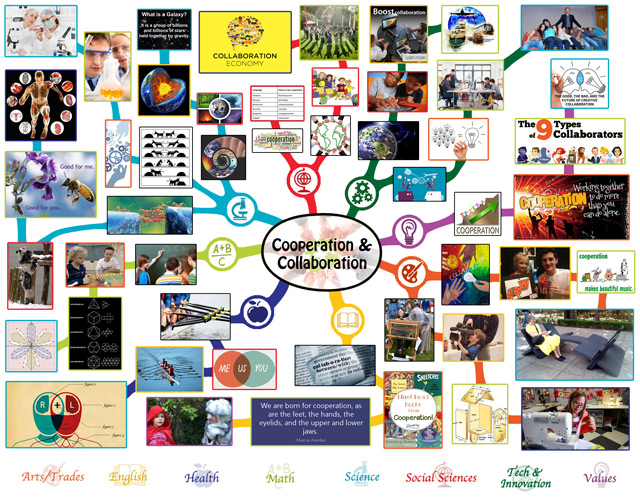
Lesson Plan Mindmap for Cooperation and Collaboration ” Click to Enlarge
CLICK ICONS TO JUMP DIRECTLY TO EACH SUBJECT ON THIS PAGE








COOPERATION AND COLLABORATION
LESSON PLAN
This page is a free-shared lesson plan archive for teaching all educational subjects within the context and theme of “Cooperation and Collaboration”. It is purposed for use in community education environments, homeschool environments, traditional schooling environments, or as a supplemental and fun addition to any education program. As part of the complete Education for Life Program, this lesson plan is specifically designed to work in conjunction with the other components: Foundations of Teaching, Curriculum, Teaching Strategies, Learning Tools and Toys, Evaluation Model, and The Ultimate Classroom. If you’d like to learn how all these components work together, click here. Click here for the specifics focused on just using the lesson plans:
CLICK HERE FOR A DETAILED TUTORIAL ON HOW TO USE THIS LESSON PLAN
NOTE: The colors are provided as a possible linear progression (red/easiest to violet/most challenging) for people that might prefer a more linear structure. Our core philosophy, however, is that through creativity every color can be made easy or challenging for any learning level.
RELATED PAGES (mouse-over for descriptions and click for complete pages)
EDUCATION OVERVIEW | HOW TO USE THIS COMPONENT | OUR OPEN SOURCE PURPOSE

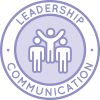
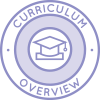
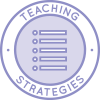
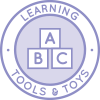
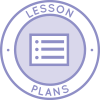
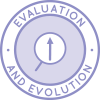
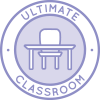
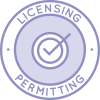

WAYS TO CONTRIBUTE TO EVOLVING THIS EDUCATION PROGRAM WITH US
SUGGESTIONS | CONSULTING | MEMBERSHIP | OTHER OPTIONS
A NOTE ABOUT ALL ONE COMMUNITY LESSON PLANS
The One Community lesson plans are intentionally designed for use in ANY educational environment and with ALL educational, cultural, religious/spiritual, and philosophical approaches to teaching and learning. They are designed without an ideological approach and specifically so they can be adapted to include the views, preferences, methodologies, and/or ideologies preferred by different parents and teachers.
For maximum flexibility and adaptation, they are also designed to be combined to teach multiple subjects at the same time. Doing this increases the creativity, effectiveness, and fun of your learning environment. Once we are on the property and operating our version of the complete school and Education for Life program, we will be adding video examples of how to combine the lessons. In the meantime, visit the Teaching Strategies page for a list of suggestions.
ARTS AND TRADES
CLICK HERE FOR THE COMPLETE SUBJECT OUTLINE FOR ARTS & TRADES
 | TEACHING ARTS AND TRADES WITHIN THE CONTEXT OF COOPERATION AND COLLABORATION |

| The Arts- Choose 2 people and have them work together with you to help you draw a picture* of ‘cooperation and collaboration’.
- Work together with a friend to perform a song or dance* about cooperation or collaboration.
- Work together with a younger person. Have them draw an imaginary creature they would like to have as a toy. Then create a 3d model/ version* for them?
- Work together with two or more people to write and perform a song or play* about cooperation and collaboration, paying special attention to ensure that everyone feels that all of the work is split evenly among your group.
- Together with at least 3 others, give a live presentation* that demonstrates how music is affected when you all collaborate, when you do not collaborate and when some of you collaborate and others improvise.
- Choose a public space and get approval to create a sculpture or artistic feature there. Choose two other people to help you brainstorm on the vision for what you would like to create in that space and to implement the creation of that feature. Create the feature with the help of those two individuals and get feedback from the public on your creation and implement any changes the majority of the public would like to see*.
- Create an art program* that is specifically designed to help children with special needs learn more about cooperation and collaboration and specifically encourages collaboration for all of its projects.
- Work with professionals in the fields of theater, music, and visual arts to a create a curriculum* about cooperation and collaboration amongst the different artistic branches.
|

| Trades- Together with a friend, create puppets* that represent people that work in your favorite trades.
- Work with two other people to create a diorama or other type of 3D representation* of the workplace of a place that you think would be fun to work in for a day.
- With your parent’s permission, take a day to go with an adult family member or friend of the family to visit their workplace. Choose an adult that works in a trade that you would like to learn more about, and make an effort to get to learn at least one new thing and try to do one thing with the cooperation and collaboration of an adult. Keep a journal* of this experience.
- With another person, create a blueprint* for a woodworking, mosaic, or fabric. Map out who will create which components, and then build the project together. Create a final document* that shares each of your viewpoints of the experience including what went well and what could be improved in future cooperation and collaboration projects.
- Line up an apprenticeship or internship in a field of your choice for at least two hours a day, for one week. Make sure it is one where you will have hands on experience working along with the person that is your mentor. Write a report* about how having that hands-on collaborative experience with that person affected your ability to learn and experience that trade.
- Create a trades/crafting program* that is specifically designed to help adults with special needs learn more about cooperation and collaboration and specifically encourages collaboration for all of its projects.
- Collaborate with another master in your trade to create an open source manual* for how to create more education, awareness, opportunities for people that are trying to learn and become skilled in that trade.
|
| CLICK HERE TO EMAIL US IF YOU HAVE AN IDEA TO ADD TO THIS SECTION |
* Please note that anything with an asterisk is just a suggestion. The diversity of options with asterisks are interchangeable and purposed to stimulate your own ideas. Any one of these suggestions could be replaced with a written paper, any form of art project (drawing, painting, music, paper mache, clay, wood, knitting/embroidery, metals, etc. etc.), an experiment, a presentation, a mindmap, a computer program, a web design project, a piece of poetry or a song, an interpretive dance or play, a group project, or anything else. What we feel is most important is that both the Learner and the Teacher agree on an exercise/activity they both feel would be maximally engaging, fun, and effective. If you come up with an idea we haven’t already thought of, please share it with us.
ENGLISH
CLICK HERE FOR THE COMPLETE SUBJECT OUTLINE FOR ENGLISH
Note: Any language can be substituted for English. The subject is listed here as “English” because that is the primary language of most of the people on the team, and the official language of the country we’re building our initial location in.
 | TEACHING ENGLISH WITHIN THE CONTEXT OF COOPERATION AND COLLABORATION |

| - Learn 3 new words for cooperation or collaboration and draw a picture* for each showing an example or what they mean to you.
- Go to the library with a friend and work together to find a book about cooperation or collaboration. Take turns reading it out loud to each other until you finish the book. Write a paragraph* on the experience.
- Create 3 different styles of poems* about cooperation and/or collaboration. Then work with one other person to create three additional poems about cooperation and collaboration of the same styles you chose before.
- With a friend, write a 3+ page short story* about cooperation and collaboration using at least 10 similes and 10 metaphors about cooperation or collaboration.
- With a partner, write and perform two argumentative speeches* each: one arguing for cooperation and collaboration and one arguing against it.
- In a small group, do a comparative study on philosophical writings about cooperation and collaboration from ancient periods in at least three different parts of the world, and right a 5-page essay* on your findings, comparing and contrasting the viewpoints of the literature/writers and the cultural and historical factors that contributed to them.
- Write an interactive children’s story*, designed to teach a lesson about cooperation and collaboration, and requires cooperation and collaboration between at least two people to interact with the story.
|
| CLICK HERE TO EMAIL US IF YOU HAVE AN IDEA TO ADD TO THIS SECTION |
* Please note that anything with an asterisk is just a suggestion. The diversity of options with asterisks are interchangeable and purposed to stimulate your own ideas. Any one of these suggestions could be replaced with a written paper, any form of art project (drawing, painting, music, paper mache, clay, wood, knitting/embroidery, metals, etc. etc.), an experiment, a presentation, a mindmap, a computer program, a web design project, a piece of poetry or a song, an interpretive dance or play, a group project, or anything else. What we feel is most important is that both the Learner and the Teacher agree on an exercise/activity they both feel would be maximally engaging, fun, and effective. If you come up with an idea we haven’t already thought of, please share it with us.
HEALTH
CLICK HERE FOR THE COMPLETE SUBJECT OUTLINE FOR HEALTH
 | TEACHING HEALTH WITHIN THE CONTEXT OF COOPERATION AND COLLABORATION |

| - Talk with a mentor* about how you feel cooperation or collaboration could be good for your emotional health.
- Make a list* of 5 sports or physical activities that are easier or more fun when you are cooperating, and talk about why you chose those and why you feel that way.
- Choose 10 different systems, functions, or healthy activities and create a chart* that shows how they work together to improve your health.
- Write a 5 to 10 page paper* about different group spiritual experiences in 5 different cultures, focusing on activities that are collaborative.
- Create a multimedia presentation* that shows 30 different examples/explanations of how the different sections of a human brain work together to perform various functions.
- Do a complex analysis of 30+ different spiritual practices/organizations and analyze their activities and determine whether they are or are not cooperative/collaborative processes and how they do or do not impact the physical and/or emotional health of their participants. Create a visual* of your results.
- Create an open source guide* to 100 cooperative/collaborative processes that will increase health and well being.
|
| CLICK HERE TO EMAIL US IF YOU HAVE AN IDEA TO ADD TO THIS SECTION |
* Please note that anything with an asterisk is just a suggestion. The diversity of options with asterisks are interchangeable and purposed to stimulate your own ideas. Any one of these suggestions could be replaced with a written paper, any form of art project (drawing, painting, music, paper mache, clay, wood, knitting/embroidery, metals, etc. etc.), an experiment, a presentation, a mindmap, a computer program, a web design project, a piece of poetry or a song, an interpretive dance or play, a group project, or anything else. What we feel is most important is that both the Learner and the Teacher agree on an exercise/activity they both feel would be maximally engaging, fun, and effective. If you come up with an idea we haven’t already thought of, please share it with us.
MATH
CLICK HERE FOR THE COMPLETE SUBJECT OUTLINE FOR MATH
 | TEACHING MATH WITHIN THE CONTEXT OF COOPERATION AND COLLABORATION |

| - Draw a picture* that tells a story about how different numbers come together in addition to make new numbers.
- Collaborate with someone to make a visual representation* of how different numbers come together using the distributive property.
- Tell the story* of a character who doesn’t know who they are, but finds out based on the information the other characters contribute about that character (the story of a one variable equation).
- Pick 20 geometric structures and write a story* to explain their properties and relationship to each other in a cooperative and collaborative way.
- Create a visual* of a function as an example of cooperation and collaboration, showing how the function and its variables work together to create specific answers, graphs etc., and include at least 20 examples.
- Make a presentation* describing the cooperative relationships between and within the primary trigonometric functions with the purpose of making an intriguing introductory lesson for those that have not been exposed to them before.
- Write 10 new lesson plan ideas* for each color, for the theme of cooperation/collaboration in mathematics.
|
| CLICK HERE TO EMAIL US IF YOU HAVE AN IDEA TO ADD TO THIS SECTION |
* Please note that anything with an asterisk is just a suggestion. The diversity of options with asterisks are interchangeable and purposed to stimulate your own ideas. Any one of these suggestions could be replaced with a written paper, any form of art project (drawing, painting, music, paper mache, clay, wood, knitting/embroidery, metals, etc. etc.), an experiment, a presentation, a mindmap, a computer program, a web design project, a piece of poetry or a song, an interpretive dance or play, a group project, or anything else. What we feel is most important is that both the Learner and the Teacher agree on an exercise/activity they both feel would be maximally engaging, fun, and effective. If you come up with an idea we haven’t already thought of, please share it with us.
SCIENCE
CLICK HERE FOR THE COMPLETE SUBJECT OUTLINE FOR SCIENCE
 | TEACHING SCIENCE WITHIN THE CONTEXT OF COOPERATION AND COLLABORATION |

| Life Sciences- Create a collage of 6+ pictures* that includes at least two pictures of mammals collaborating, 2 of plants collaborating, and 2 of insects collaborating. Choose a different synonym for cooperation/collaboration for each pair that you feel describes the picture.
- Choose what you feel are the top 10 collaborative living organisms. Write 2+ sentences* for each one that describe why you think it deserves a spot in the top ten.
- Choose a plant or animal and pick 20 parts of its physiology. Write a sentence* about how each part you chose cooperates/collaborates to maintain the health of the organism.
- Pick 30-50 elements of an ecosystem and write a 7-10 page paper* about how they all work together collaboratively to maintain the ecosystem.
- Write a 10+ page research paper* comparing and contrasting the biological organisms/life forms you consider to be the most collaborative and the least collaborative.
- Choose a physiological process of an organism that is a collaboration of different parts of the organism, and choose another organism that is completely different and draw parallels between one of its physiological experiences and create a multimedia presentation* to share your work.
- Pick a parasite and look at it as A) a collaborative organism succeeding in its function OR B) an organism that is disrupting a collaborative system and write a detailed open source tutorial* on a collaborative explanation for the situation that addresses and finds solutions to any issues arising because of the organism (or choose any life science field and create something similar).
|

| Physical Sciences- Make a collage of 20 pictures* that demonstrates cooperation/collaboration and your favorite physics property.
- Construct and explain something that explains* the physics property of your choice that involves cooperation/collaboration.
- Draw construction instructions* for 2 physics properties that demonstrate collaboration individually, but make your project so they are working together collaboratively as well.
- Pick 10 people and have each choose a chemical reaction. Work collaboratively with each person to create a written explanation for how their chosen reaction is a collaboration between the components involved. Create a mindmap* of the written explanations.
- Do a research project and write a paper* that sites 10+ examples of experiments/physical science research/development that was dramatically improved because of collaboration.
- Consulting an expert in the field for input or feedback, write a new lesson plan idea* for each color, for the theme of cooperation/collaboration in physical sciences.
- Do a collaborative call or meeting with a person representing each field for Chemistry, Physics, Quantum Mechanics, and Thermodynamics to talk about ways in which the physical sciences can collaborate even more for better inter-field discoveries and development. Create an open source manual* that explains the current strengths, weaknesses, and suggested methods of improvement in this.
|

| Earth Sciences- Draw a picture*, with a friend, of 2 or more natural features of the earth working together.
- Work together with 2 other people and create a diorama* that shows Earth’s Components: Air, Water, Land cooperating/collaborating.
- Create a presentation* on how the different layers of the earth and atmosphere cooperate and collaborate with each other.
- Brainstorm with a friend for ideas and then create a project* that shows how the different components and features of earth work together to create at least 3 different types of weather.
- Write a story* from the perspective of the Galaxy, where each star, planet, etc. are living beings/organisms, and how even though they form different star systems, all are collaborating within the Galaxy working together as a whole.
- Create a team of qualified investigators to assess the various factors that ‘collaborate’ to contribute to ‘catastrophic’ weather events, and for 1-3 of them create a ‘handbook’* or other informative method deemed best to reach the largest number of the population in that area. Include early warning signs, preparedness, evacuation as necessary, and any other important information for the public, and collaborate with the local authorities and/or schools and/or media on the best method of distribution.
- Work together with an education consultant and a earth sciences ‘expert’/ advisor to create a cross-level curriculum*, for the theme of cooperation/collaboration in earth sciences.
|
| CLICK HERE TO EMAIL US IF YOU HAVE AN IDEA TO ADD TO THIS SECTION |
* Please note that anything with an asterisk is just a suggestion. The diversity of options with asterisks are interchangeable and purposed to stimulate your own ideas. Any one of these suggestions could be replaced with a written paper, any form of art project (drawing, painting, music, paper mache, clay, wood, knitting/embroidery, metals, etc. etc.), an experiment, a presentation, a mindmap, a computer program, a web design project, a piece of poetry or a song, an interpretive dance or play, a group project, or anything else. What we feel is most important is that both the Learner and the Teacher agree on an exercise/activity they both feel would be maximally engaging, fun, and effective. If you come up with an idea we haven’t already thought of, please share it with us.
SOCIAL SCIENCES
CLICK HERE FOR THE COMPLETE SUBJECT OUTLINE FOR SOCIAL SCIENCES
 | TEACHING SOCIAL SCIENCES WITHIN THE CONTEXT OF COOPERATION AND COLLABORATION |

| - Draw a picture* of 3 things you love that your family does cooperatively and/or collaboratively.
- Write* about 5 things your family does better when they are done cooperatively/collaboratively.
- Create a presentation* about 5 things you do better collaboratively/cooperatively and 5 things you could do better if you did it cooperatively/collaboratively.
- Organize a community event* designed to promote collaboration/cooperation. Interview 20 people that attended the event about what they did/did not learn about cooperation and collaboration and write a report* about the entire experience.
- Research what the top 20 most essential skills relating to cooperation and collaboration are and attend a group decision making event (like a town hall meeting, etc.) and evaluate that event based on the criteria you identified as important and create a report* on the entire experience, including suggestion for how to improve the meeting.
- Study two branches or types of government you believe to be completely different and in a short essay* compare and contrast how cooperation/collaboration is/isn’t used and the effectiveness of each.
- Study the history of one or more cultures that were highly skilled at cooperation/collaboration, including sociological/psychological, governmental, and other societal aspects. Write an open source guide* for how to integrate the aspects that work into the modern world in a way that could have a dramatic positive global outcome.
|

| Foreign Languages
(Each of the following is to be completed in the foreign language(s) being studied)- Learn words for different cooperation and collaboration related concepts.
- Read & write with words for cooperation and collaboration related concepts.
- Explore ‘cooperation and collaboration’ in fiction.
- Explore & create different types of literature in relation to cooperation and collaboration.
- Compose a new piece of literature about cooperation and collaboration.
- Explore the complete history of and writings about cooperation and collaboration words.
- Write a dissertation level paper on cooperation and collaboration.
|
| CLICK HERE TO EMAIL US IF YOU HAVE AN IDEA TO ADD TO THIS SECTION |
* Please note that anything with an asterisk is just a suggestion. The diversity of options with asterisks are interchangeable and purposed to stimulate your own ideas. Any one of these suggestions could be replaced with a written paper, any form of art project (drawing, painting, music, paper mache, clay, wood, knitting/embroidery, metals, etc. etc.), an experiment, a presentation, a mindmap, a computer program, a web design project, a piece of poetry or a song, an interpretive dance or play, a group project, or anything else. What we feel is most important is that both the Learner and the Teacher agree on an exercise/activity they both feel would be maximally engaging, fun, and effective. If you come up with an idea we haven’t already thought of, please share it with us.
TECHNOLOGY AND INNOVATION
CLICK HERE FOR THE COMPLETE SUBJECT OUTLINE FOR TECHNOLOGY AND INNOVATION
 | TEACHING TECHNOLOGY & INNOVATION WITHIN THE CONTEXT OF COOPERATION AND COLLABORATION |

| Technology- With a mentor,talk* about your most technologically advanced collaborative toy, what makes it technologically advanced, and what makes it collaborative.
- Choose a form of social media (with the guidance of an adult) and collaborate on a task using social media. Write a short report* that explains why you chose the one that you chose and explains how social media was or was not a good form of collaboration for that task.
- Write a 5 page report* on how computers affect collaboration. Include past (before internet), present, and future projections for how they have and will help collaboration.
- Research global transportation of people and goods, and collaborative ways in which they have changed and evolved. Collaborate with at least 1 other person to create a 3-10 minute multimedia presentation* about your findings.
- Explore how technology has improved community collaboration and cooperation. Come up with a new way to increase collaboration/cooperation even more. Implement it and report on your results*.
- Research artificial intelligence and the ways in which it may potentially aid in collaboration and/or cooperation. Choose a technological way to present your results*.
- Review 15 different types of collaborative software and/or technological tools. Use one of the tools to collaborate with at least one other person to write an open source guide* on them and their potential benefits to collaboration.
|

| Innovation- Pick your favorite subject and draw a picture*of a way to learn or teach it collaboratively with a small group of kids.
- Imagine 3 things you think are unrelated and draw a picture* that relates all these things together in a collaborative way.
- Ask 5 of your friends what their favorite things to do in groups are. Create a collage* of their ideas.
- Talk to 5 friends and have them imagine any random thing they like, and write a story* that puts all 5 things together in a collaborative way.
- Ask 5 of your friends what their favorite things to do in groups are. Create 5 different combinations of all of those things and create a graphic representation* of this.
- Collaborate with 2 people to create, give, and evaluate a poll for 50+ people you know on what their preferred method of learning is. Then create a new learning style that incorporates the aspects you discovered in the same proportion you discovered. Then teach at least 5 people from your study something and ask for their feedback on the learning process. Document and share the entire process and results in any way your group feels is best*.
- Create a research report* that explores various aspects of NLP and various famous users/teachers of it, focusing on the different ways in which NLP is or is not used cooperatively and/or collaboratively.
- Write a blog about* the aspects of successful cooperative and collaborative businesses and your thoughts on how these aspects could be integrated into a field or specific business of your choice.
- Collaborate with at least one other person and research the top 5-10 successful companies you feel have best integrated cooperation and collaboration into their business models and generate a recommendation for how either: 1: 2 or more of these companies could work together to create something even better, or 2: how to integrate the primary successful collaborative aspects in a way that could benefit the entire world. Open source your entire project*.
|
| CLICK HERE TO EMAIL US IF YOU HAVE AN IDEA TO ADD TO THIS SECTION |
* Please note that anything with an asterisk is just a suggestion. The diversity of options with asterisks are interchangeable and purposed to stimulate your own ideas. Any one of these suggestions could be replaced with a written paper, any form of art project (drawing, painting, music, paper mache, clay, wood, knitting/embroidery, metals, etc. etc.), an experiment, a presentation, a mindmap, a computer program, a web design project, a piece of poetry or a song, an interpretive dance or play, a group project, or anything else. What we feel is most important is that both the Learner and the Teacher agree on an exercise/activity they both feel would be maximally engaging, fun, and effective. If you come up with an idea we haven’t already thought of, please share it with us.
VALUES
CLICK HERE FOR THE COMPLETE SUBJECT OUTLINE FOR VALUES
 | TEACHING VALUES WITHIN THE CONTEXT OF COOPERATION AND COLLABORATION |

| - Discuss* with at least 3 other people things you like to do as a group or team.
- Get together with three people you like to collaborate with and as a group, talk* about 5 things you think are most beneficial to work on together and why you chose each.
- Talk to 10 ‘different’ people and ask them what their 5 favorite things to do are in a group and create a chart or visual display* from the results. Then go back to those people and share your project with them and collaborate with them to make it better, and integrate their ideas. Then write a report* on what you learned about collaboration in this process.
- Interview 20 people you think value collaboration, then choose the person you feel would be best to collaborate with and collaborate with them about how increasing collaboration could change the world. Write a 3 to 5 paper about the experience* and include the results of the 20 interviews and how/why you chose the 1 person to work with.
- Pick two organizations, one that you consider to be a leader in collaboration or that considers collaboration as one of its highest values, and another that you feel needs significant improvement in collaboration and write a paper* about how and why you would suggest applying the collaborative elements of the first to the second, and how that would effect the second. Include the benefits and potential repercussions to the second company.
- Talk to ten people about 15 ways their life would be different if they made collaboration their #1 value. Take what you learned and find 1-5 people to collaborate with and develop a strategy for increasing collaboration in the lives of the people you interviewed and/or others. Create an open source tutorial *of the entire project.
- Create a collaboration tool* based on the things you value about collaboration and ideas you have about increasing collaboration, and set it up so that it is constantly evolving itself.
|
| CLICK HERE TO EMAIL US IF YOU HAVE AN IDEA TO ADD TO THIS SECTION |
* Please note that anything with an asterisk is just a suggestion. The diversity of options with asterisks are interchangeable and purposed to stimulate your own ideas. Any one of these suggestions could be replaced with a written paper, any form of art project (drawing, painting, music, paper mache, clay, wood, knitting/embroidery, metals, etc. etc.), an experiment, a presentation, a mindmap, a computer program, a web design project, a piece of poetry or a song, an interpretive dance or play, a group project, or anything else. What we feel is most important is that both the Learner and the Teacher agree on an exercise/activity they both feel would be maximally engaging, fun, and effective. If you come up with an idea we haven’t already thought of, please share it with us.
OTHER RESOURCES
We're building a resource section. Click here if you have a suggestion or resource for this page.
OPEN SOURCE SUBJECT RESOURCES (click icons for complete pages)



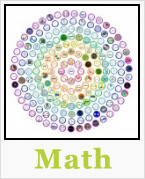



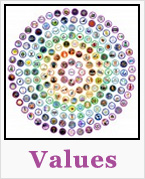
OPEN SOURCE CURRICULUM OUTLINES (click image for summaries and links to complete pages)
CARE
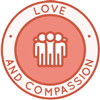
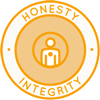
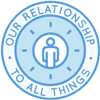
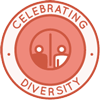
SHARE
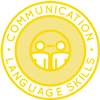
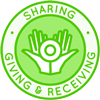
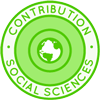
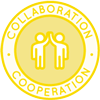
PLAY
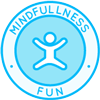
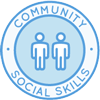
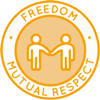
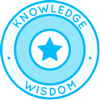
OPEN SOURCE TEACHING METHODOLOGY SUMMARIES
Montessori | Waldorf | Orff | Reggio | Multi-Intelligence | Bloom's Taxonomy | Study Tech | I-WE
INDEX OF ALL THE ONE COMMUNITY OPEN SOURCE LESSON PLANS

Click this image for the Lesson Plans for Life page with links to the rest of the lesson plans
THE WORLD'S LARGEST ONLINE FREE EDUCATION RESOURCE ARCHIVE
RELATED CONTENT AND OTHER RELATED RESOURCES
We're building this resource section. Click here if you have a suggestion or resource for this page.
























 One Community
One Community




